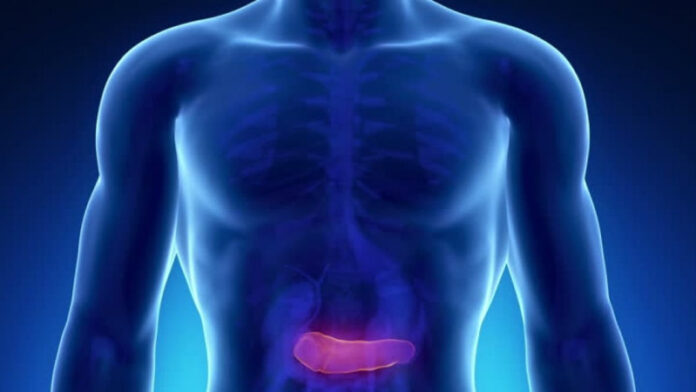The pancreas, a vital component of our digestive system, is not immune to challenges, and one such concern is pseudocysts. These fluid-filled sacs near the pancreas necessitate thoughtful and precise treatment. Let’s explore effective approaches for treating Pancreatic Pseudocysts while understanding the importance of timely and comprehensive care for the optimal healing of this vital organ. Whether you’re a healthcare professional or someone dealing with this health issue, this guide breaks down the complexities, making it easier to grasp effective ways to treat Pancreatic Pseudocysts.
Pancreatic Pseudocysts – A Brief Overview
Pancreatic Pseudocysts, commonly emerging as a complication of pancreatitis, occur due to inflammation of the pancreas. The pancreas, when inflamed, can lead to the formation of these fluid-filled sacs. If left untreated, these pseudocysts can result in discomfort and complications, underscoring the critical need for timely intervention. Seeking prompt treatment is not merely a medical recommendation but a fundamental step towards ensuring a healthy recovery and mitigating potential complications associated with these sacs. A proactive approach to addressing Pancreatic Pseudocysts is important in fostering a smoother healing process and preventing further health challenges.
Drainage Procedures
Drainage procedures stand as a primary intervention in treating Pancreatic Pseudocysts. This involves delicately inserting a thin tube through the skin, facilitating fluid drainage from the pseudocyst. This minimally invasive method alleviates symptoms and expedites healing, promoting a smoother and more comfortable patient recovery experience. The simplicity and effectiveness of drainage procedures make them a go-to choice for managing Pancreatic Pseudocysts.
Endoscopic Drainage
Endoscopic drainage provides a less invasive alternative to address Pancreatic Pseudocysts. By using an endoscope—an advanced tool equipped with a flexible tube, light, and camera—physicians gain a visual insight into the pseudocyst. Creating an opening for drainage through this method significantly reduces the need for surgical intervention, enabling a faster recovery and minimising potential complications.
Percutaneous Drainage
Percutaneous drainage, involving the insertion of a thin needle directly into the pseudocyst through the skin, remains a valuable option. This procedure allows for the controlled removal of fluid, effectively promoting the collapse of the cyst. Its versatility makes it especially useful in cases where other drainage methods might not be suitable, ensuring a tailored approach to each patient’s unique condition.
Surgical Intervention
When less invasive methods prove insufficient, surgical intervention becomes a viable and often necessary option. Surgical procedures, whether aiming to remove or drain the pseudocyst, provide a more enduring solution to complex cases. While considered a more extensive approach, surgery effectively addresses challenging scenarios, ensuring a comprehensive resolution.
Medication Management
Beyond procedural interventions, medication management plays a crucial role in the treatment plan for Pancreatic Pseudocysts. Prescription of pain management and anti-inflammatory medications enhances the overall strategy. These medications alleviate symptoms and contribute to a more comfortable recovery, ensuring patients can navigate the healing process with minimal discomfort.
Monitoring and Follow-up
Post-intervention, monitoring and follow-up emerge as crucial components of pancreatic pseudocyst treatment. Regular check-ups and imaging studies are fundamental in assessing the ongoing progress of healing. The adaptability of the treatment plan, based on continuous evaluation, ensures any emerging issues are promptly addressed, fostering an individualised and effective approach to each patient’s recovery journey.
Lifestyle Modifications
Comprehensive healing involves adopting lifestyle modifications that significantly contribute to the recovery process. Patients are often counselled to embrace dietary changes, including a shift to a low-fat diet. This dietary adjustment reduces strain on the pancreas, promoting a conducive environment for healing. Moreover, it’s often advised to avoid alcohol, which is a crucial step in supporting the health of your pancreas and promoting overall recovery.
Collaborative Care and Patient Education
Ensuring a holistic approach to pancreatic pseudocyst treatment involves collaborative care among healthcare professionals and active patient education. Healthcare providers work closely with patients to explain the treatment plan, potential side effects, and expected outcomes. Patient engagement is vital, empowering individuals to participate actively in their recovery. This collaborative approach fosters a supportive healthcare environment where patients feel informed and involved in decision-making, contributing to a more positive treatment experience and improved long-term outcomes.
Also Read: Effective Chorea Treatment for Improved Well-being
Nurturing Pancreatic Health
Addressing Pancreatic Pseudocysts involves a comprehensive approach. From drainage procedures and endoscopic interventions to surgical options and medication management, the treatment plan varies based on the severity of the condition. Regular monitoring, coupled with lifestyle modifications, ensures a holistic healing process.
Remember, early intervention is key to successful treatment. If you experience symptoms such as abdominal pain, nausea, or vomiting, consult a healthcare professional promptly. Timely and appropriate treatment can lead to a smoother recovery, promoting optimal pancreatic health.
Understanding the available approaches empowers individuals to make informed decisions about their health. By fostering awareness and promoting early intervention, we contribute to the collective well-being of individuals facing Pancreatic Pseudocysts.













